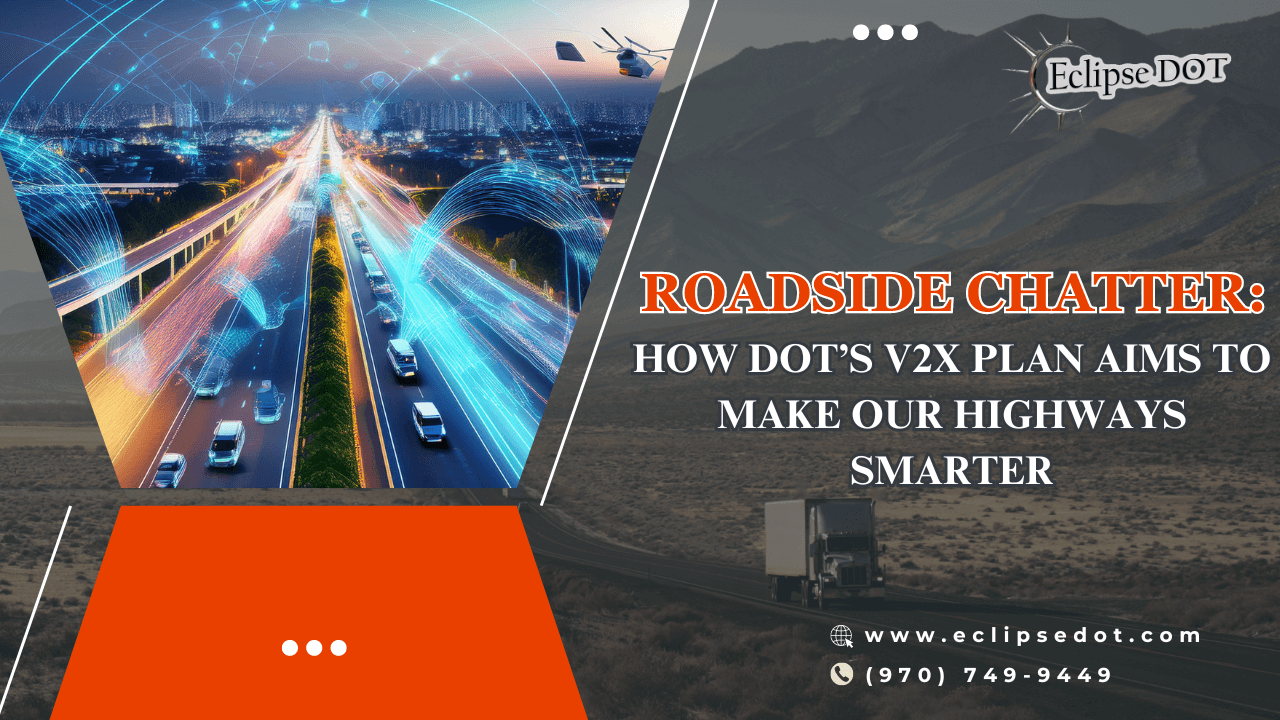Imagine a world where your car can chat with traffic lights, road signs, and even other vehicles—all in real-time. It’s not the plot of a futuristic movie; it’s the U.S. Department of Transportation’s (DOT) latest and greatest plan to supercharge road safety. Welcome to the world of Vehicle-to-Everything (V2X) technology, where the highways of tomorrow are smart, connected, and dedicated to keeping you safe.
A Tech-Powered Vision for Safer Roads
The DOT’s V2X plan is as ambitious as it is exciting. By 2024, they want 20% of the National Highway System (NHS) to be equipped with this cutting-edge technology, with that number ramping up to 50% by 2028, and full deployment expected by 2036. What does that mean for you? Imagine driving down a highway where every traffic light, road sign, and even the vehicles around you are part of a massive network, all communicating with each other to make your drive as safe as possible (Highways.dot.gov) (Transportation.gov).
It’s like turning every road into a super-intelligent system that’s constantly watching out for you—no more guessing if that traffic light will change, no more worrying about blind spots or unseen dangers. The road itself has your back.
Why This Matters: Safety First, Always
This isn’t just about cool tech, though. The heart of the V2X plan is safety. On August 16th, Transportation Secretary Pete Buttigieg and other top DOT officials unveiled the plan at a highly anticipated event in Washington, D.C. The plan, dubbed “Saving Lives with Connectivity: A Plan to Accelerate V2X Deployment,” is all about leveraging technology to save lives. It’s a bold step forward in the fight to reduce traffic accidents and fatalities across the country (Transport Topics) (5GAA).
The stats are pretty staggering. The National Transportation Safety Board (NTSB) estimates that V2X technology could prevent up to 615,000 crashes over the next few decades. That’s not just a number—that’s thousands of lives saved, families spared the grief of losing a loved one, and a significant reduction in the $340 billion annual economic cost of motor vehicle crashes in the U.S. (NTSB).
The Tech That’s Already Working
But don’t think this is just a pie-in-the-sky idea that’s years away from reality. V2X technology is already proving its worth in various parts of the country. In fact, the Federal Highway Administration (FHWA) has awarded $60 million in grants to kickstart V2X projects in states like Arizona, Texas, and Utah. These aren’t small pilot programs either—these are major initiatives designed to show just how powerful this technology can be (Transport Topics) (5GAA).
Take Maricopa County in Arizona, for example. They’re using a $19.6 million grant to connect 750 physical and virtual roadside units with 400 vehicles across transit, emergency, and freight fleets. Think of it as giving your car a sixth sense—one that can “see” around corners and communicate with the entire road system to avoid potential hazards (5GAA).
In Utah, $20 million is being used to deploy V2X on some of the state’s most critical roadways, including parts of Interstate 80 and I-25. These projects will demonstrate the technology’s ability to handle everything from bad weather to tricky curves, all while keeping drivers informed and safe (Highways.dot.gov).
The Roadblocks Ahead
Of course, no massive technological rollout is without its challenges. One of the biggest hurdles for V2X is the limited availability of the wireless spectrum. Think of the wireless spectrum as prime real estate—it’s limited, and everyone wants a piece of it. For V2X to work effectively, it needs reliable access to this spectrum, but with so many other technologies vying for bandwidth, it’s a bit of a crowded house (Highways.dot.gov).
Then there’s the issue of interoperability. For V2X to be truly effective, every piece of the puzzle—every vehicle, every traffic light, every road sign—needs to speak the same language. But with so many different manufacturers and suppliers involved, getting everyone on the same page is no small feat. It’s like trying to get a room full of people from different countries to understand each other without a translator (5GAA).
Cybersecurity is another major concern. When you’re dealing with a network as vast and complex as the one envisioned for V2X, keeping it secure is paramount. The last thing anyone wants is for these critical systems to be hacked or compromised. The DOT is keenly aware of these risks and is working hard to ensure that V2X technology is as secure as it is smart (Transportation.gov).
Why It’s Worth the Effort
Despite these challenges, the potential benefits of V2X are simply too great to ignore. The DOT’s plan is a critical step toward creating a safer, smarter transportation system for everyone. It’s about using the best technology available to make our roads safer, reduce traffic fatalities, and improve the overall driving experience.
But it’s not just about safety—it’s also about efficiency. A fully deployed V2X system could dramatically reduce traffic congestion, cutting down on commute times and lowering emissions. Imagine a world where your car can tell you the exact time a traffic light will change, or where your vehicle can automatically reroute you around an accident or traffic jam. That’s the promise of V2X (5GAA).
And let’s not forget about the economic benefits. The implementation of V2X technology could create thousands of jobs in the tech and automotive industries, as well as in public infrastructure. It’s a win-win situation: safer roads, more jobs, and a boost to the economy (Transport Topics).
The Road Ahead
The DOT’s V2X deployment plan is like a GPS guiding us towards a future where our highways are not just roads but intelligent networks working to keep us safe. If the DOT can overcome the challenges, we might just be cruising down a highway where every car, sign, and pedestrian is part of a seamless, life-saving conversation.
Ready for more? Dive deeper into the details by checking out these sources:
- U.S. Department of Transportation (Transportation.gov)
- Federal Highway Administration (Highways.dot.gov)
- Transport Topics (Transport Topics)
- National Transportation Safety Board (NTSB)
- 5G Automotive Association (5GAA)
Gain exclusive access to our CDL & DOT Compliance articles with a trial at DOTDocs.com. And don’t forget to claim your FREE micro audit at THE ECLIPSE DOT MICRO AUDIT. Ready for seamless operations? Discover the difference today!


